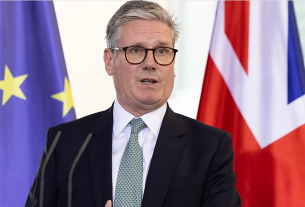|
Getting your Trinity Audio player ready...
|
US consumer prices rose less than expected for a second straight month in November amid declines in the costs of petrol and healthcare as well as used cars and trucks, resulting in the smallest annual increase in inflation in nearly a year.
Underlying consumer prices advanced by the least in 15 months, the report from the United States Department of Labor on Tuesday showed, clearing the way for the Federal Reserve to start scaling back the size of its interest rate hikes on Wednesday.
While Americans still faced higher costs for rental housing, economists expected a moderation next year. The report was published as officials at the US central bank gathered for their final two-day policy meeting of the year.
The Fed, in the midst of its fastest rate-hiking cycle since the 1980s, is expected to lift its benchmark overnight interest rate by 50 basis points Wednesday, snapping a string of four straight 75-basis-point increases. Economists still expected the Fed to continue its monetary policy tightening at least through the first half of 2023.
“The broad improvements raise hopes price pressures are easing and the Fed will not have to tighten as much next spring,” said Will Compernolle, a senior economist at FHN Financial in New York. “But it is still not quite the ‘compelling’ inflation improvement [Fed Chair Jerome] Powell needs to be convinced the Fed can pause soon.”
The consumer price index (CPI) increased 0.1 percent last month after advancing 0.4 percent in October. Petrol or gasoline prices dropped 2 percent after rising 4 percent in October. The cost of natural gas fell as did prices for electricity.
Food prices climbed 0.5 percent, the smallest since December 2021, after rising 0.6 percent in October. The cost of food consumed at home increased 0.5 percent, driven by rises in prices of fruits and vegetables, cereals and nonalcoholic beverages. But meat, fish and eggs cost less last month.
Economists polled by Reuters had forecast the CPI would gain 0.3 percent. In the 12 months through November, the CPI climbed 7.1 percent. That was the smallest advance since December 2021, and followed a 7.7 percent rise in October. The annual CPI peaked at 9.1 percent in June, which was the biggest increase since November 1981. Inflation remains above the Fed’s 2 percent target.
Stocks on Wall Street rallied on the data. The dollar fell against a basket of currencies. US Treasury prices rose.
Sticky rents
Annual inflation is slowing in part as last year’s big increases drop out of the calculation. The Fed’s aggressive monetary policy stance is also dampening demand. The tamer inflation readings added to reports this month showing improvements in consumers’ inflation expectations in December.
Excluding the volatile food and energy components, the CPI increased 0.2 percent. That was the smallest gain in the so-called core CPI since August 2021 and followed a 0.3 percent rise in October. The core CPI was restrained by prices for used cars and trucks, which dropped 2.9 percent and were down for a fifth straight month.
Prices for new motor vehicles and household furnishings were unchanged. Goods deflation is setting in, with core goods prices falling 0.5 percent, the most since April 2020, after declining 0.4 percent in October. That also reflects a shift in spending to services and an improvement in supply chains, which have contributed to excess inventory and forcing businesses to discount merchandise to lure cash-strapped holiday shoppers.
There was also good news from services, the largest component of the CPI basket, which gained 0.3 percent. Healthcare costs declined 0.5 percent, reflecting decreases in prices for hospital and related services as well as prescription medication. Airline ticket prices fell 3 percent while hotel accommodation dropped 0.7 percent.
Rents, however, remained sticky. Owners’ equivalent rent, a measure of the amount homeowners would pay to rent or would earn from renting their property, jumped 0.7 percent after increasing 0.6 percent in October. Though independent rent measures suggest rental inflation is moderating, that is not expected to show up in the CPI data until sometime next year.
Services, excluding rental shelter, were unchanged. This price category is viewed by Fed’s Powell as a leading indicator of inflation. But other services prices increased strongly last month, driven by a pick-up in education, communication, personal and recreation services.
“This group accounts for 30 percent of the core CPI and underscores that with labour costs continuing to rise at a strong rate, inflation is unlikely to be resolved in quick order,” said Sarah House, senior economist at Wells Fargo in Charlotte, North Carolina.
In the 12 months through November, the core CPI advanced 6 percent after increasing 6.3 percent in October. A tight labour market, with 1.7 job openings for every unemployed person in October, is keeping wages elevated.
Economists expect the Fed to lift its policy rate to a level higher than the recently projected 4.6 percent, where it could stay for some time. The Fed has raised its policy rate this year from near zero to a 3.75 percent – 4 percent range as it battled the highest inflation in 40 years.
Slowing inflation and prospects of smaller rate hikes have raised hopes the economy could avoid an anticipated recession next year or just suffer a mild downturn.
“The report, assuming further moderation ahead, provides more confidence that the Fed may only need to tap the brakes lightly in the new year to cap this tightening cycle,” said Sal Guatieri, senior economist at BMO Capital Markets in Toronto. “If so, it will go some ways to increasing the odds of a soft landing. We still see a shallow downturn.”



